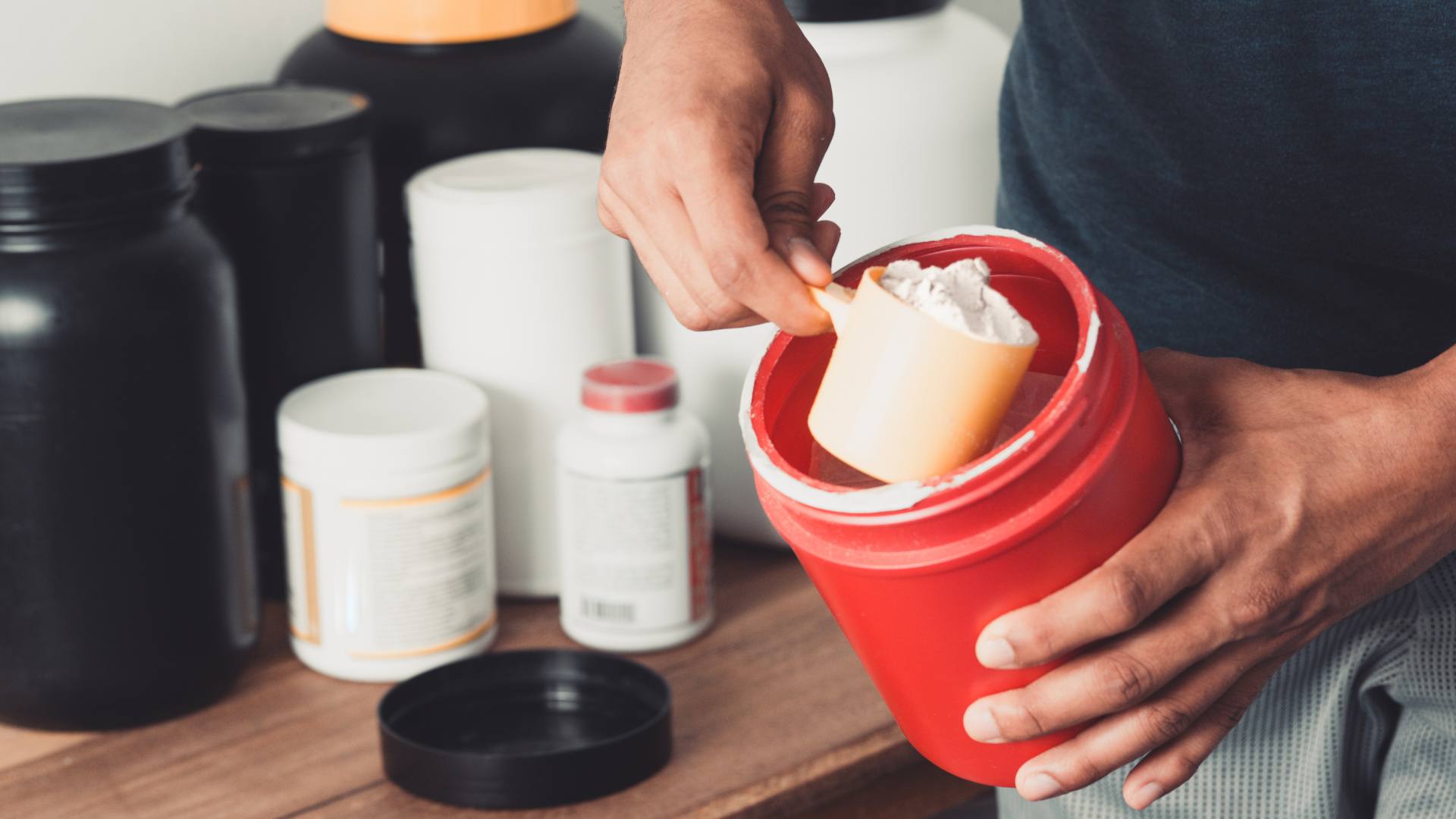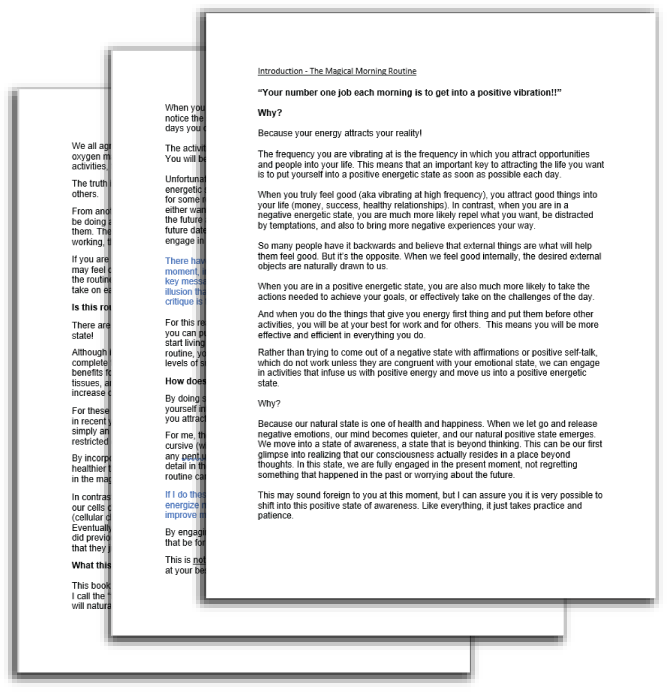Creatine: Benefits Beyond the Gym
Written by Stephen Anton PhD on April 24, 2024

When it comes to supplements that have made a significant impact in the world of fitness and sports, creatine stands as a true champion.[1] This naturally occurring compound, found predominantly in meat and fish, has gained immense popularity for its wide-ranging benefits.[2] Beyond its well-documented advantages in muscle building and sports performance, creatine offers a plethora of other health benefits.[3] In this blog, we’ll dive deep into the world of creatine and explore the numerous ways it can benefit not only athletes but also individuals seeking improved overall health and well-being.
The Path to Resilience
Resilience is defined as the ability to bounce back from adversity stronger than before. It’s the capacity to adapt and thrive in the face of challenges and setbacks. And while resilience is often thought of as an innate trait, research has shown that it can also be cultivated through deliberate practice and consistent effort.
One of the most effective ways to build resilience is by consistently choosing to do the harder thing. When we push ourselves outside of our comfort zones and embrace challenges, we create opportunities for growth and development that strengthen our resilience muscles. Just like a muscle grows stronger through resistance training, our resilience grows stronger through facing and overcoming adversity. Here, the notion that the harder thing is just a combination of simple things becomes vital. Each small step we take contributes to the larger goal, making the seemingly impossible achievable.
What is Creatine? Everything You Need to Know
Are you asking yourself, “What is creatine?” or researching, “What does creatine do?” If so, we’ve got you covered. Here’s everything you need to know.
Enhanced Athletic Performance
One of the most well-known benefits of creatine is its ability to enhance athletic performance. Creatine phosphate, a form of creatine stored in muscles, acts as a rapid source of energy during short bursts of intense activity, such as weightlifting, sprinting, or high-intensity interval training (HIIT).[1,2] By increasing your body’s creatine stores through supplementation, you can experience improved strength, power, and endurance during workouts. This translates into the ability to lift heavier weights, run faster, and push through intense training sessions, ultimately leading to better athletic performance.
Muscle Growth and Recovery
Creatine’s impact on muscle growth is another compelling reason for its popularity among fitness enthusiasts. By increasing intramuscular creatine levels, you can stimulate muscle protein synthesis, promoting muscle growth and hypertrophy.[4,6] Additionally, creatine may help reduce muscle damage and inflammation post-exercise, aiding in faster recovery and minimizing soreness.[5] Oxidative stress and inflammation are reduced as a result of creatine acting as a buffer which allows muscles to recover quicker and build up endurance over time. This means you can train harder and more frequently, accelerating your progress in the gym.
Cognitive Benefits
Beyond its physical benefits, creatine has shown promise in enhancing cognitive function. Research suggests that creatine supplementation can improve cognitive performance, particularly in tasks that require quick thinking, memory, and mental endurance.[7,8,9] Studies have also shown that older adults who take creatine supplements see improvements in memory with regards to recall tasks and long-term memory. Creatine has also been shown to reduce the negative cognitive effects associated with sleep deprivation, such as grogginess and mental fatigue. This makes creatine a valuable tool for athletes seeking a competitive edge and individuals looking to boost their cognitive abilities.
Neuroprotective Properties
Creatine’s benefits extend to the realm of neuroprotection.[10] Some studies suggest that creatine supplementation may help protect brain cells from damage caused by oxidative stress and mitochondrial dysfunction in neurodegenerative diseases.[11] Newer studies have tested the effects of creatine supplementation on individuals with traumatic brain injuries and saw results indicative of creatine supplementation reducing negative head trauma side effects. This has led to ongoing research into its potential as a therapeutic agent for conditions like Parkinson’s and Alzheimer’s disease, although more research is needed to establish definitive conclusions.
Improved Metabolic Health
Creatine may also play a role in improving metabolic health. Some evidence suggests that creatine supplementation can enhance insulin sensitivity and glucose tolerance, potentially reducing the risk of type 2 diabetes.[12,13] Additionally, creatine may support healthy weight management by increasing the body’s resting metabolic rate, allowing for more efficient calorie burning.[14] Recent reviews have reported that creatine supplementation may not only help promote and maintain muscle mass, but also aid in fat mass loss, especially when paired with energy restriction or physical activity.
Heart Health Benefits
Emerging research indicates that creatine may have a positive impact on heart health.[15] It can help lower levels of homocysteine, an amino acid associated with an increased risk of heart disease when elevated.[16,17] By promoting lower homocysteine levels, creatine may contribute to a healthier cardiovascular system. New studies have also shown that creatine supplementation may protect the heart during an ischemic event by preventing arrhythmia and improving cardiac function, but there is need for further research (DOI: 10.1186/s12970-017-0173-z).
Safe and Well-Tolerated
Creatine is one of the most extensively studied supplements, and it has a remarkable safety profile. When taken within recommended doses, it rarely causes adverse effects.[2,18] High doses should not be taken by individuals with pre-existing renal conditions, however, they may engage in regular supplementation. Clinical experiences have shown that even at high dosage levels (20 g/d) and for extended periods of time, adverse events are not commonly reported and creatine is still considered safe. Most people can use creatine without any issues, making it a safe and accessible supplement for individuals of various ages and fitness levels.
What is the Optimal Dosage?
For most people, a single 5 gram dose is sufficient to obtain the benefits described above. It’s quite easy to take, just add a scoop to a water or your favorite non-alcoholic beverage. And the good news is that it can be taken any time throughout the day. Some people prefer to take in the morning because of the nice energy it provides, while others prefer to take it before or after workouts. There is no “wrong” choice.
Which Brand Should I Choose?
There are a lot of potential options to choose from when it comes to creatine as many companies are interested in selling a product that actually delivers. Of all the options out there, the best creatine I have tried is the instantized creatine from the company gains in bulk. This new creatine is 100% pure and 100% soluble, which means no bloating, cramping, or other unwanted side effects. Additionally, it is third party tested to ensure the purity of each batch. It mixes easily in water and the effects are definitely noticeable.
If you are interested in trying this brand, you can use the link below to get 15% OFF at checkout!
https://www.gainsinbulk.com.com/discount/STEPHEN16431
The Many Benefits of Creatine
Creatine is more than just a staple in the fitness world; it’s a versatile compound with a wide range of benefits. From enhancing athletic performance and promoting muscle growth to boosting cognitive function, protecting brain health, and improving metabolic and heart health, creatine offers something for everyone.
Whether you’re an athlete aiming to reach new heights or simply looking to enhance your overall well-being, creatine may be a valuable addition to your supplement regimen. As with any supplement, it’s essential to consult with a healthcare professional before starting creatine supplementation to ensure it aligns with your specific needs and health goals.
16/8 Intermittent Fasting: Tips from an Industry Expert
Written by Stephen Anton PhD on June 30th, 2023

The 16:8 intermittent fasting plan, also known as the 16:8 diet or time-restricted feeding, is a popular fasting method that involves restricting your daily eating window to a specific time-period and fasting for the remaining hours of the day.
16/8 Intermittent Fasting Plan
The “16:8” refers to the fasting and eating windows within a 24-hour cycle. Here’s how the 16/8 intermittent fasting plan typically works:
5 Reasons for the Increased Popularity of 16/8 Intermittent Fasting
The reason this approach has become so popular is that it’s highly sustainable and easy to follow once the body has adapted to this way of eating.
The 16:8 intermittent fasting plan gained popularity through a combination of factors, including scientific research, anecdotal evidence, and increased interest in alternative approaches to weight loss and health improvement. Here are a few key factors that contributed to its rise in popularity:
Points to Consider While Practicing 16/8 Fasting
The 16/8 plan offers flexibility in choosing the eating window that suits your schedule and preferences. Common approaches include starting the fast in the evening after dinner and skipping breakfast the next morning or delaying the first meal of the day until later in the morning.
Remember, consistency and sustainability are key factors in any dietary approach. It’s essential to find a pattern that works well with your lifestyle and promotes a healthy relationship with food.
Muscle Growth and 16/8 Intermittent Fasting
The 16:8 intermittent fasting plan may not be considered the optimal approach for maximizing muscle growth compared to other dietary strategies.
Muscle growth requires an adequate intake of nutrients, particularly protein, to provide the necessary building blocks for muscle synthesis and repair.
In the 16:8 plan, there is a limited eating window of 8 hours, which may make it challenging for some individuals to consume enough calories and nutrients, including protein, within that time frame.
This could potentially hinder muscle growth if nutrient intake is not properly managed.
However, as described in the blog “Intermittent Fasting for Bulking” this is certainly possible and I believe that fasting and bulking (muscle growth) can be combined successfully.
16/8 Fasting and Your Circadian Rhythm
The 16:8 intermittent fasting plan can be designed to align with circadian rhythms, which are the natural biological rhythms that regulate various physiological processes in the body, including metabolism and sleep-wake cycles.
Our circadian rhythms are influenced by external cues, such as light and darkness, and play a role in regulating metabolism. The timing of food intake can impact the synchronization of our internal body clocks and optimize metabolic processes.
By aligning the eating window of the 16:8 plan with the body’s natural circadian rhythms, it is believed to promote better metabolic health and overall well-being.
How to Time the 16/8 Intermittent Fasting Plan
16/8 Intermittent Fasting Final Thoughts
While the 16:8 intermittent fasting plan can be structured to align with your circadian rhythms, individual variations exist, and what works best for one person may not be suitable for another.
For this reason, it is essential to listen to your body, adapt the fasting plan to your needs and preferences, and seek guidance from a healthcare professional or registered dietitian if necessary.

Get the Introduction to Dr. Anton’s Upcoming Book: Magic Morning Routine
Take advantage of this 100% free PDF and learn how to create a morning routine that helps you feel and perform at your best.

Get the Introduction to Dr. Anton’s Upcoming Book: Magic Morning Routine
Take advantage of this 100% free PDF and learn how to create a morning routine that helps you feel and perform at your best.

Get the Introduction to Dr. Anton’s Upcoming Book: Magic Morning Routine
Take advantage of this 100% free PDF and learn how to create a morning routine that helps you feel and perform at your best.









